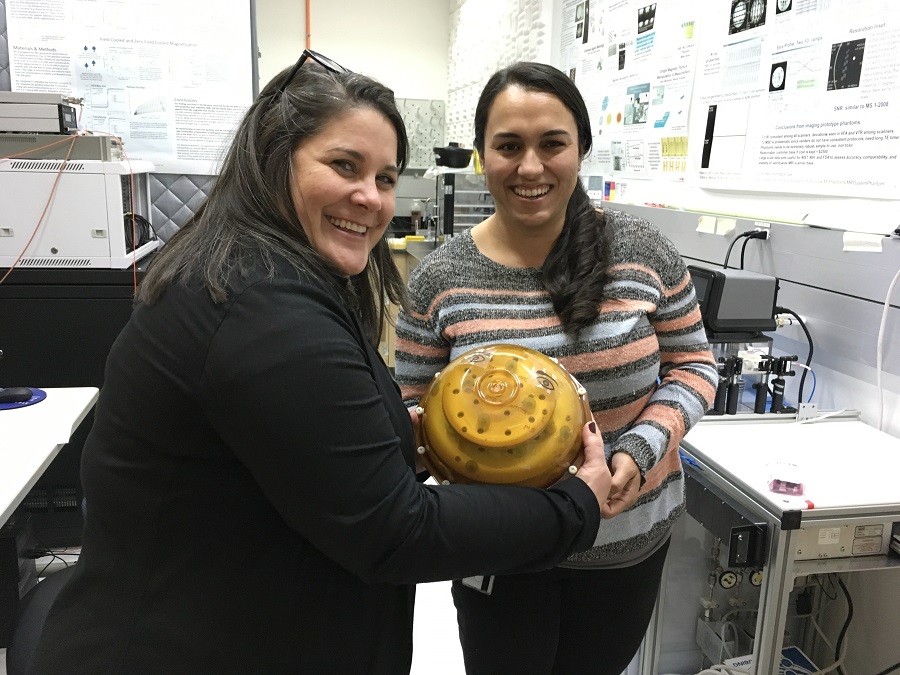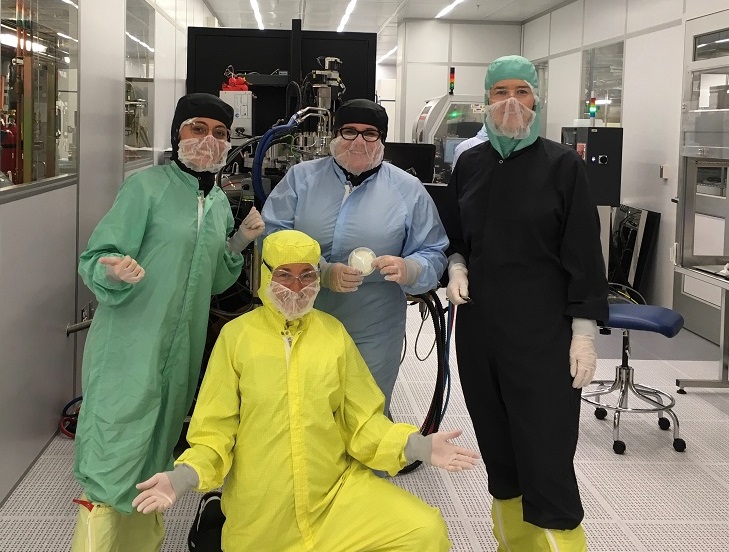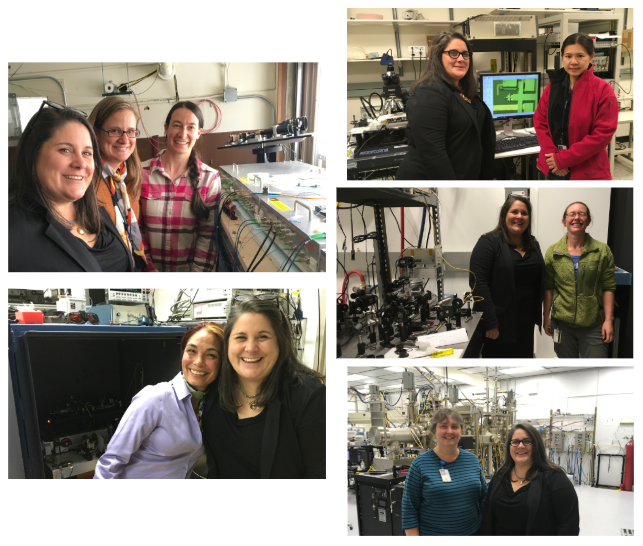The Optical Society Visits National Institute of Standards & Technology and University of Colorado Boulder to Discuss Diversity and Inclusivity
The Optical Society Visits National Institute of Standards & Technology and University of Colorado Boulder to Discuss Diversity and Inclusivity
Marcia Lesky, Senior Director, Diversity, Inclusion & Volunteer Cultivation
October is Global Diversity Awareness Month and at The Optical Society (OSA), we proudly support and encourage diverse and inclusive membership and programming. As the Senior Director of Diversity, Inclusion & Volunteer Cultivation, I had the opportunity to visit the National Institute of Standards & Technology (NIST) in Boulder, CO as well as JILA at the University of Colorado Boulder on 10-11 October 2019 to discuss OSA’s Diversity & Inclusion programs, designed to promote and infuse inclusivity throughout the organization and our larger community.

Caption: Michele Martin shows off a phantom, a standard reference device used to ensure that systems and methods for imaging the human body are operating correctly and providing reliable and quantitative information.
Credit: Aly Artusio-Glimpse, NIST
During the trip, I had the opportunity to meet with some wonderful groups and people. At NIST, I connected with the Steering Group on Equity in Career Advancement – one of the winners of this year’s OSA Diversity & Inclusion Advocacy Recognition. The group has undertaken efforts to explore critical issues such as unintended impacts to promotion and award opportunities for minority groups; unconscious or implicit biases within the agency; and disparities that can have a cumulative impact over the course of a career. I also joined the Boulder Awesome Women in Science Group who meet regularly for coffee and discussions around issues facing women at NIST to explore ways we can work together to make even greater impact.
For me, one of the most exciting parts of my trip was learning from some amazing women and visiting several different labs to hear about the exciting work these scientists are contributing to our field. From learning about the phantoms used to calibrate MRI or experiencing what it takes to enter their Microfabrication Facility, the visit deepened my understanding of what it takes to fabricate the state of the art microelectronic and microelectromechanical systems needed by the scientists at NIST.
Here are just a few of the many amazing things happening at NIST
- Sonia Buckley is part of a group building photonic and superconducting electronics systems to realize large-scale neuromorphic hardware.
- As an NRC Postdoc, Michele Martin works with a group building low field magnetic resonance imaging and spectroscopy systems that can be used for many applications including the study of intact plant roots.
- Tara Fortier leverages optical frequency combs to phase-coherently transfer stabile frequencies from an optical reference to the optical and microwave domain for a variety of applications from precision measurement of optical clocks for time-keeping and tests of fundamental physics to low-noise microwave generation.

Caption: Aly Artusio-Glimpse, Susan Schima and Katarina Cicak showing Marcia around the NIST cleanroom.
Credit: National Institute of Standards and Technology
- Quantitative Nanostructure Characterization Group leader, Kris Bertness, gave a tour of the Molecular-Beam Epitaxy (MBE) Facility where, among other things, they are growing intense nanowire LEDs with application to visual displays and local illumination for scanning probe tips.
- Laura Sinclair develops techniques for precise time and frequency transfer over kilometers of air using frequency combs, while Eleanor Waxman works to improve detection of trace gases like carbon dioxide and methane in cities and near drilling sites with dual comb spectrometers.
- Li-Anne Liew develops new measurement methods and instruments to evaluate the mechanical properties to fracture micro and mesoscale volumes of material, with an emphasis on metal alloys used for micro electro mechanical systems (MEMS) and additive manufacturing. The goal is to determine the small-scale mechanical properties with well-understood uncertainties to improve structural analysis codes, as well as to investigate effects of microstructural features on bulk properties.
- In the Boulder Microfabrication Facility (BMF), Susan Schima produces components for a new generation of chip-scale atomic devices and instruments for a broad range of precision metrology and standards applications. Katarina Cicak designs and fabricates superconducting electronics and qubit circuits to improve computing and precision measurements in the field of quantum information. And Aly Artusio-Glimpse makes optomechanical devices called Smart Mirrors that measure the momentum of light to determine the power of a laser without absorbing the laser light in the process.
- With her Molecular and Bio-Photonics Group, Kim Briggman develops optical methods and standards for biomedical and environmental applications.
During this trip, I visited the JILA and JEDI (my favorite name for a group yet!) – JILA Excelling in Diversity & Inclusion. This group works to provide opportunities for all students, staff and scientists to gain tools, strategies and knowledge to enhance their current and future professional careers and explore issues related to gender, with real-world advice and insight focused on successfully dealing with realities. I also met with several staff from STROBE – an National Science Foundation (NSF) Science & Technology Center with the mission to create powerful and broadly-applicable real-time nano-to-atomic scale imaging modalities to advance imaging science and increase access, that can be used to address grand challenges in science and technology, while building a diverse STEM workforce.
Personally, I would like to thank the amazing scientists and staff at NIST and JILA (in particular Aly Artusio-Glimpse who organized the visit) for welcoming OSA into their communities, sharing their stories, and inspiring me to continue to promote diversity and inclusivity in the optics and photonics field.

- Precise time and frequency transfer with Laura Sinclair and the detection of trace gasses in cities and drilling sites with Eleanor Waxman
- Microscale dynamic response analysis with Li Anne Liew
- Photonic and superconducting electronics with Sonia Buckley
- The Molecular-Beam Epitaxy Facility with Kris Bertness
- Optical frequency combs and optical clocks with Tara Fortier
Credit: Aly Artusio-Glimpse, NIST
